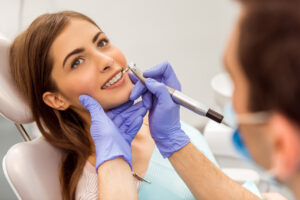What Is an Orthodontist and What Do They Do – Full Guide

Orthodontists play a key role in creating healthy, confident smiles. People often think they only handle braces, but their work goes beyond that. They deal with misaligned teeth, bite problems, and jaw irregularities, helping children, teens, and adults improve oral function and aesthetics. If you’ve ever wondered why you or your child might need to see an orthodontist, this guide breaks it all down.
What Makes Orthodontists Different from Dentists?
Orthodontists are dentists who undergo extra training to specialize in aligning teeth and jaws. After dental school, they complete a two to three-year orthodontic residency focused on diagnosing and correcting alignment problems. While general dentists focus on oral hygiene, fillings, and crowns, orthodontists deal with issues like crooked teeth, overbites, underbites, crossbites, and gaps.
You might visit a dentist to treat a cavity, but you’ll see an orthodontist if your teeth need repositioning. Their main job is to realign teeth using braces, clear aligners, retainers, or other appliances.
When Should You See an Orthodontist?
Orthodontic treatment isn’t just for teens. People of all ages can benefit. Here’s when a visit might be necessary:
-
Your teeth are visibly crowded or spaced apart
-
You bite down and your top or bottom teeth don’t align properly
-
You experience jaw discomfort or difficulty chewing
-
You lost baby teeth early or late as a child
-
You want a straighter smile
Most orthodontists recommend that children have an initial evaluation around age 7. Early detection helps catch potential issues and allows for timely intervention, possibly avoiding longer treatments later in life.
What Treatments Do Orthodontists Offer?
Orthodontists use several tools and techniques to correct alignment problems. Treatment depends on age, dental history, and the type of misalignment.
Braces
Braces remain one of the most common and effective orthodontic treatments. They use brackets, wires, and elastic bands to apply gentle pressure, slowly moving teeth into their correct positions. You can choose between metal braces and ceramic options. Many patients looking for braces in Issaquah prefer metal braces because they are reliable and cost-effective, while others choose ceramic for a more discreet appearance.
Invisalign
Clear aligners offer a modern alternative to braces. Invisalign uses a series of transparent, removable trays designed to gradually shift teeth. They are ideal for adults and teens who want a more subtle treatment method. Invisalign aligners must be worn for 20 to 22 hours a day and changed every one to two weeks.
Orthodontists now offer specialized options like Invisalign Teen in Issaquah, which features eruption tabs for growing molars and indicators that track wear time. This version suits teenagers with developing jaws and busy schedules.
Retainers
After any orthodontic treatment, retainers keep your teeth in their new positions. Without them, teeth may shift back. Retainers may be fixed or removable depending on your case. They help protect your investment and maintain long-term results.
Palatal Expanders
These devices help widen the upper jaw in children and teens. If the jaw is too narrow, it can cause crossbites or crowding. Palatal expanders apply gentle pressure to encourage growth and create more space for permanent teeth.
Elastics and Other Appliances
In some cases, orthodontists use rubber bands, headgear, or other appliances to apply extra pressure and guide jaw development. These tools support overall treatment goals and help correct bite issues more efficiently.
What Happens During an Orthodontic Visit?
Your first orthodontic visit usually includes an oral examination, X-rays, and digital scans or molds of your teeth. The orthodontist studies your bite, jaw alignment, and overall dental health to recommend the best treatment plan.
Here’s what the process typically involves:
-
Consultation – You’ll discuss concerns, review photos or X-rays, and talk about treatment options.
-
Planning – The orthodontist builds a custom plan using your scans and dental history.
-
Treatment Start – Braces or aligners are placed. You’ll receive care instructions and return for regular adjustments.
-
Progress Checks – Visits every few weeks keep treatment on track.
-
Retention Phase – After straightening is complete, retainers are used to maintain your results.
Do Adults Need Orthodontic Treatment?
Many adults seek orthodontic care to improve their smile or fix problems they didn’t address as teens. It’s never too late. Straight teeth are easier to clean, which reduces the risk of gum disease and cavities.
Orthodontists often recommend Invisalign for adults because it fits well into daily routines without drawing attention. Others choose ceramic braces for a professional look with effective results.
The Benefits of Orthodontic Treatment
Orthodontic care offers more than just cosmetic improvements. Straight teeth and a proper bite affect chewing, speech, and oral hygiene. Here’s how it helps:
-
Reduces wear and tear on teeth
-
Lowers the risk of jaw pain or temporomandibular joint (TMJ) problems
-
Makes brushing and flossing easier
-
Boosts confidence through a better smile
It also helps correct habits like mouth breathing, thumb-sucking, or tongue thrusting, which can impact jaw development and speech.
Why Choose Egger Orthodontics in Issaquah
If you’re searching for reliable orthodontic care in Issaquah, Egger Orthodontics offers personalized treatment with a focus on comfort and lasting results. Dr. Nadine Egger and Dr. Gabi Aragon bring years of experience and a patient-first approach to every visit. Their friendly team creates a supportive space for kids, teens, and adults alike.
Schedule an appointment with Egger Orthodontics to get started on a straighter, healthier smile. The team is ready to guide you through every step with a treatment plan that fits your needs and lifestyle.
FAQs
What’s the best age to get braces?
Most children start braces between ages 10 and 14, when most adult teeth are in place. However, early evaluations around age 7 help orthodontists catch and treat issues sooner if needed.
How long does Invisalign treatment take?
Invisalign treatment typically lasts 12 to 18 months, but it depends on how complex your case is and how closely you follow your plan.
Can adults get braces or Invisalign?
Yes. Many adults choose orthodontic treatment to improve their bite or smile. Invisalign is especially popular among adults for its discreet design.
Are braces painful?
Braces might feel uncomfortable during the first few days and after adjustments. Most people adapt quickly. Over-the-counter pain relievers and soft foods can help manage soreness.
Is Invisalign Teen different from regular Invisalign?
Yes. Invisalign Teen in Issaquah includes features like eruption tabs and wear-time indicators, making it more suitable for teenagers who are still growing.



